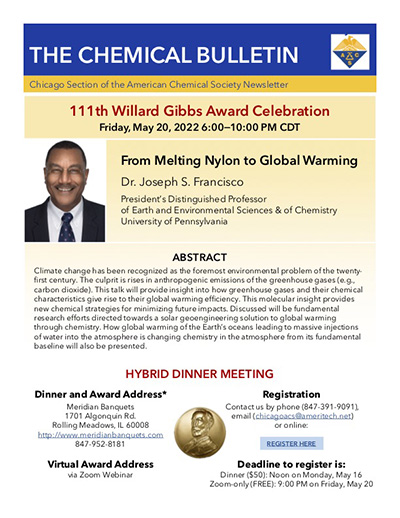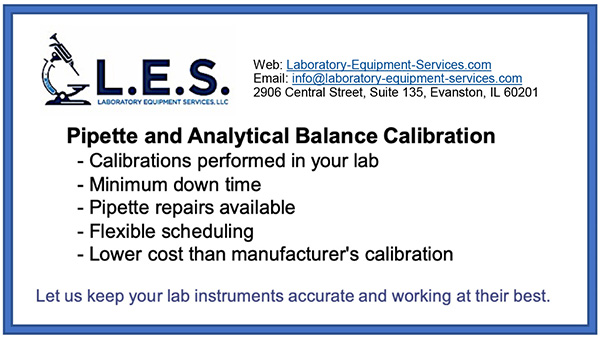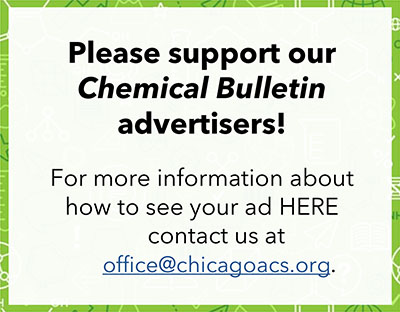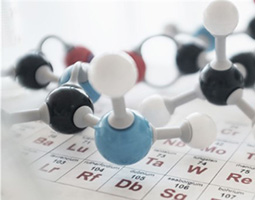The May 2022 Chemical Bulletin 
PDF of the Latest Bulletin
https://chicagoacs.org/images/downloads/Chemical_Bulletin/2022_05_chembull.pdf
Next Meeting
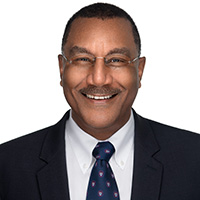
111th Willard Gibbs Award Celebration
6:00 - 10:00 PM CDT, Friday, May 20
Dr. Joseph S. Francisco
President’s Distinguished Professor
of Earth and Environmental Sciences
& of Chemistry
University of Pennsylvania
"From Melting Nylon to
Global Warming"
ABSTRACT:
Climate change has been recognized as the foremost environmental problem of the twenty-first century. The culprit is rises in anthropogenic emissions of the greenhouse gases (e.g., carbon dioxide). This talk will provide insight into how greenhouse gases and their chemical characteristics give rise to their global warming efficiency. This molecular insight provides new chemical strategies for minimizing future impacts. Discussed will be fundamental research efforts directed towards a solar geoengineering solution to global warming through chemistry. How global warming of the Earth’s oceans leading to massive injections of water into the atmosphere is changing chemistry in the atmosphere from its fundamental baseline will also be presented.
HYBRID DINNER MEETING
Dinner and Award Address
Meridian Banquets
1701 Algonquin Rd.
Rolling Meadows, IL 60008
http://www.meridianbanquets.com
847-952-8181
Virtual Award Address
via Zoom Webinar
PROGRAM
REGISTRATION
DEADLINE FOR IN-PERSON ($50) REGISTRATION: MONDAY, MAY 16
DEADLINE FOR ZOOM-ONLY (FREE) REGISTRATION: 9:00 PM FRIDAY, MAY 20
or email ([email protected]).
Dinner Menu
Soup: Cream of tomato basil bisque with bleu cheese
Meridian Salad
Choice of entree:
• BEEF: Roast top sirloin with rosemary merlot sauce
• SALMON: Fresh broiled Norwegian salmon with dill sauce
• VEGETARIAN: Portobello mushroom with zucchini
Dessert: Hot fudge brownie à la mode
Citation
• For pioneering work to apply computational chemistry to determine the atmospheric fate of chlorofluorocarbons and their alternatives.
• For discovery of a new class of radical–molecule complexes and their relation to association species in the atmosphere that lead to shutting down chemistry at night.
• For illustrating how computational studies can be used to drive the discovery of new mechanistic principles governing atmospheric chemical processes.

Meet The Speaker
Joseph S. Francisco received his B.S. degree from the University of Texas at Austin in 1977 and Ph.D. from the Massachusetts Institute of Technology in 1983, then trained as a Research Fellow at the University of Cambridge in England before returning to MIT as a Provost Postdoctoral Fellow. He is currently the President's Distinguished Professor of Earth and Environmental Science and Professor of Chemistry at the University of Pennsylvania. Professor Francisco is a fellow of the American Academy of Arts and Sciences and a member of the National Academy of Sciences, American Philosophical Society, and German National Academy of Sciences Leopoldina. In 2010 President Barack Obama appointed him to serve on the President’s Committee on the National Medal of Science. Dr. Francisco currently serves as an Executive Editor of the Journal of the American Chemical Society and on the Governing Board of the National Research Council. He was President of the American Chemical Society in 2010.
Register Now
https://chicagoacs.org/meet-reg1.php?id=188
History of the Gibbs Award
For history about the Willard Gibbs Award and a list of previous award winners, please visit: https://chicagoacs.org/Willard_Gibbs_Award.
From the Editor's Desk

Welcome Back!
We are thrilled that the ACS Chicago Section will return to in-person meetings with the 111th Willard Gibbs Medal Award Celebration. Please join us as we honor Dr. Joseph S. Francisco!
Returning after a long absence, we are faced with a range of emotions. We are excited to see new and old friends yet perhaps apprehensive about large gatherings. We are somber as we remember friends, colleagues, and family members who are no longer with us. Mostly, however, we are filled with hope that face-to-face events will improve how we make connections and help our community.
In addition to our regular features, the May issue of the Bulletin contains the annual financial report for the section and the Council report from the Spring ACS Meeting. As always, we thank our contributors who make this newsletter special: Paul Brandt, Mark Cesa, Helen Dickenson, Ken Fivizzani, Josh Kurutz, Sherri Rukes, and Andrea Twiss-Brooks.
- AMBER ARZADON and IRENE CESA
Letter from the Chair

For the Benefit of Earth
and All Its People
Prof. David Wiemer’s talk at the April program meeting, “Our Search for Natural Insecticides,” fit comfortably within the ACS theme for this year’s Chemists Celebrate Earth Week celebration, “The Buzz about Bugs: Insect Chemistry.” Pest-repellent compounds found in plants hold the promise of being both effective at protection of crops and environmentally benign. The many ways that chemistry can contribute to environmental improvement and sustainability are important focal points of current research and development, and we will have an excellent opportunity to learn more about chemistry’s contributions at the Fall 2022 ACS National Meeting here in Chicago, with its theme of “Sustainability in a Changing World.”
Research on chemistry and the environment is by no means new. Climate change has been studied and measured for many decades, and awareness of human impact on the environment has been at the forefront of public attention since Rachel Carson’s Silent Spring. Today more than ever, the need for creative solutions to environmental problems will call on the skills of chemists and related scientists and engineers.
Environmental improvement spans not only STEM disciplines but also all of chemistry. The field is wide open for improving public awareness and for advances, creative solutions, and the invention of new applications for remediation.
Organic chemistry is important to the study of biodegradable functional molecules and to life-cycle analysis of man-made chemicals in the environment. Analytical chemistry techniques allow chemists to detect and quantify pollutants in the environment and in living systems. Physical chemists can measure the kinetics and mechanisms of action and decomposition of chemical compounds in environmental systems. Inorganic chemists and chemical engineers develop new catalysts for decomposition of environmental chemicals and remediation of natural areas. Polymer chemists develop ways to deal with the growing problem of long-lasting polymers in the environment, like the newly emerging challenges of microplastics and plastic waste in the world’s oceans. Medicinal chemists face the challenge of the pervasiveness of pharmaceuticals in water systems.
This year’s Willard Gibbs Medal awardee, Professor Joseph S. Francisco, has devoted his research career to the study of the effects of man-made chemicals in the atmosphere and development of new ways to minimize the future impact of greenhouse gases. We will celebrate Dr. Francisco’s award on May 20 with a hybrid monthly program meeting. We hope to see many of you there (registration information may be found on the Chicago Section website at chicagoacs.org).
- MARK CESA

Textbooks on chemistry and the environment from the 1960s and 1970s.
Councilors' Report
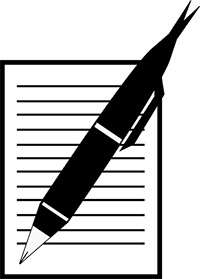
ACS Spring Council Meeting Report
The 263rd National Meeting of the ACS was a hybrid meeting held in San Diego, March 20 - 24, 2022. The theme of this meeting was “Bonding Through Chemistry.” Dr. Angela K. Wilson, ACS President, presided over the virtual Council Meeting on March 23, 2022. The Chicago Section was represented at Council by the following nine councilors:* Paul Brandt (Public Relations and Communications), Mark Cesa (International Activities), David Crumrine (Constitution and Bylaws), Ken Fivizzani (Economic and Professional Affairs), Russell Johnson (International Activities), Fran Kravitz (Ethics), Josh Kurutz, Margy Levenberg (Meetings and Expositions), Tim Marin (Nomenclature, Terminology, and Symbols).
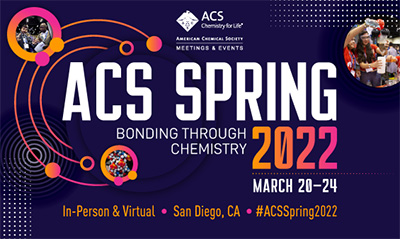
Finances: In 2021, ACS generated a net from operations of nearly $79 million, which was almost $48 million higher than budgeted. Total revenues were $660 million, which was 5.2% or $32.6 million over budget. Expenses for the year were $581 million, 2.5% below budget. This overall result was attributed to strong revenue performance from the Society’s Information Services units (CAS and ACS Publications), reduced spending due to COVID-19 related impacts, and careful management of expenses across the ACS. The Society’s overall financial position strengthened considerably in 2021 as Unrestricted Net Assets, or reserves, increased by $123 million to $676 million on December 31. The increase was primarily the result of $79 million net from operations and $71 million due to growth of the Society’s investments.
Governance: The Council approved a petition to amend the use of dues in support of Local Sections and Divisions. The previously designated pool of allotments, 20% of dues revenue, was not sufficient to cover the desired level of support. This support will now be funded by a quasi-endowment from the Society’s unrestricted investment balances. The Council approved the 2023 Schedule of Membership. The 2022 Schedule went live a few months ago, and the 2023 Schedule was designed to add more value and increased choice for members by adding clarity and a more intuitive explanation of how our membership works. The 2023 Schedule did not change any dues, benefits, eligibility or privileges from the 2022 Schedule.
Meetings and Expositions: As of Sunday, March 20, 2022, in-person registration for the San Diego Meeting stood at 9,452 registrants, representing about 74% of the total registration.
Fall Elections: By electronic ballot, the Council selected Mary Carroll and Rigoberto Hernandez as candidates for 2023 President-Elect. All ACS Members vote for the President-Elect.
Fall 2022 National Meeting: Please note that the Fall National Meeting will be held in Chicago, August 21–25 (first time in Chicago since 2007). Please consider volunteering to help the host Chicago Section serve the attendees in several ways.
If you have any questions or comments about the above information, please contact me or one of your other councilors. You may contact me at [email protected].
- KEN FIVIZZANI
*Councilors’ committee assignments are shown in parentheses.
Award Winner
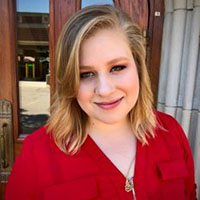
2022 Emerging Star Award Goes to
Jana Markley
It is with great pleasure that we announce the 2022 Chicago Section of the American Chemical Society’s Emerging Star Award goes to Jana Markley. Each year the Chicago Section presents the Emerging Star Award to a younger member or member with less than 10 years of service with the Chicago Section who has provided exceptional service to the section, over, above, and separate from any other achievements from either their profession or the National ACS.
The committee that selects the Emerging Star Awardee is chaired by the previous Chicago Section Distinguished Service Awardee and is comprised of the past five Distinguished Service Awardees. The award committee recognized Jana’s work with the Younger Chemists Committee (YCC).
Currently, Jana is the Chair of the Communities Committee, which oversees the Minority Affairs, Senior (SCC), Women (WCC), and Younger Chemists Subcommittees, and serves as chair of YCC. The Chicago Section won the 2021 ChemLuminary Award for Outstanding Performance by a Local Section, Very Large Section category, in large part due to the work of the YCC and its interaction with the WCC as well as other local sections.
The YCC held eight virtual meetings beginning in April and going through December 2020, immediately after COVID-19 had driven us apart. Meetings were based on Exploring Career Paths, Landing and Starting a New Job (with the St. Louis and Nashville sections), Jumpstarting Your Career, Growing Your Network, Leading Without Authority, Building Interpersonal Relationships, and multiple networking events. Jana continued this strong work through 2021 and into 2022, hosting five virtual events, including two cross-committee collaborative events with SCC, WCC, and the Committee on Minority Affairs.
Jana serves on the Chicago Section’s Board of Directors and was recently elected by her peers to serve as an Alternate Councilor for 2022–2024. Jana also serves as a member on the ACS National Younger Chemists Committee.
Jana earned her B.S. in Chemistry from the Oklahoma State University and Ph.D. in synthetic organic chemistry from the University of Kansas, and she completed a W.M. Keck postdoctoral fellowship with Prof. Timothy Wencewicz at Washington University in St. Louis. Jana currently works as a Senior Scientist in drug discovery at AbbVie in North Chicago.
Please join us in congratulating Jana as our 2022 Emerging Star Awardee!
- PAUL BRANDT
Recent Meeting
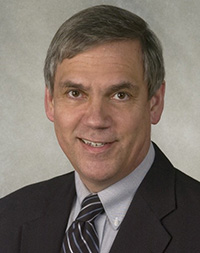
Natural Insecticides
Our April Meeting was abuzz with excitement for Chemists Celebrate Earth Week (CCEW), as David Wiemer from the University of Iowa spoke about learning from nature in the search for new insecticides and antifungal agents.
The presentation began with a discussion of leafcutter ants and how they naturally avoid certain plants when foraging. This observation led to the isolation of plant leaf extracts that were toxic to the ants and/or killed the fungus that the ants cultivate in their nests for food.
Active ingredients in the extracts were separated by chromatography and characterized by mass spectrometry and two-dimensional 1H– and 13C-NMR. The proposed structure of the main active ingredient, named arieianal based on its plant source (Piper arieianum), was verified by organic synthesis.
Another example of natural insect behavior leading to the isolation and synthesis of potential insecticidal agents was based on a study of cabbage looper larvae. These larvae are known for their “trenching behavior” in leaves prior to feeding in order to avoid substances exuded in leaf sap. Overall, Dr. Wiemer’s fascinating talk demonstrated the benefits of an interdisciplinary approach in modern scientific research.
Chicago ACS Finances

Budget and Finance
The annual financial statement for the ACS Chicago Section is shown on the following page. The report was prepared by Herb Golinkin, Section Comptroller, and is published in The Chemical Bulletin for dissemination to the membership, in accordance with standard operating procedures for the section. In this article we describe the role of section officers and other elected and appointed members of the Board of Directors (the governing body for the section) with responsibility for section finances.
The Treasurer, Michael Morello, is an elected officer of the section with duties specified in the Section Bylaws. These duties are to account for the operating funds of the section by keeping an accurate record of receipts and disbursements and disbursing funds as approved by the Board. The Treasurer prepares a monthly report of all transactions for the Board.
The Treasurer works closely with the Budget Director, who is appointed by the Chair in June of each year. Tim Marin is the current Budget Director. Based on procedures laid out in the section’s Policy Declarations, the Budget Director prepares a written financial statement of estimated revenues and expenditures for the year and submits the proposed budget to the Board for their review and approval. Expenditures that are not covered in the annual budget adopted by the Board must be voted on separately by the Board before funds can be disbursed. The Budget Director also prepares monthly and yearly reports showing actual and budgeted income and expenses for all section activities, including the office, staff, events, committee functions, and scholarship payments.
Herb Golinkin is the current Comptroller for the Chicago Section. The duties of the Comptroller, who is elected by the Board, include preparing the annual financial statement and are further delineated in the Policy Declarations. The integrated financial report consists of two main parts—the profit and loss statement showing the annual income and expenses (operating budget) for the section, and the balance sheet summarizing the section’s assets, liabilities, and equity. This report is also transmitted to the National ACS office each year. In consultation with the accountant, the Comptroller executes and submits required tax forms to the Internal Revenue Service and engages in regular conferences with the Auditor.
Responsibility for overseeing and managing the permanent or investment funds for the Chicago Section rests with the three-person Board of Trustees, whose role is spelled out in the Section Bylaws. Trustees are elected by the Board to serve staggered three-year terms that begin January 1 of each year. Current trustees are Ken Fivizzani, Mark Kaiser, and Milt Levenberg. (The Treasurer is also an ex-officio member of the Board of Trustees.) According to the Bylaws, the Trustees have charge of the trust funds and permanent investments for the section and administer these accounts based on both the Bylaws and any specific conditions under which individual trust funds may have been acquired. The Trustees are authorized to purchase and retain investments. At the close of each fiscal year the Trustees prepare and submit an annual report to the Treasurer.
*Thanks to Mark Cesa, Ken Fivizzani, Herb Golinkin, and Russ Johnson for fact-checking this report
Permanent endowment funds maintained by the Chicago Section include the General Endowment Fund, the Willard Gibbs Medal Endowment Fund, the Henrietta Z. Freud Trust Fund, the Scholarship Fund, the Marie Lishka Scholarship Fund, the Bernard Schaar Scholarship Fund, the Marshall Smoler Scholarship Endowment Fund, and the Project SEED Endowment Fund. Earnings from the funds are used to supplement operating expenses and section activities, including scholarships and awards.
2021 Financial Report


Safety First
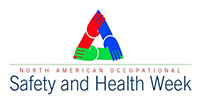
A Short Primer on Exposure Limits
To mark North American Occupational Health and Safety Week, which is celebrated during the first full week in May, the topic of this month’s Safety First! report involves occupational exposure limits for chemicals. Chemists consulting individual Safety Data Sheets for chemicals are often confronted with an “alphabet soup” of acronyms to assess their relative risk of exposure. OEL, PEL, REL, TLV, TWA, STEL, IDLH. HELP!
What do these acronyms represent? Do they have practical relevance for a research chemist, high school teacher, or even a consumer purchasing a chemical at the local garden center or hardware store?
Occupational exposure limit (OEL) is a general term describing the maximum concentration of a substance in the air that is considered to be safe for employees who work full-time with a specific chemical. Most OELs are advisory rather than regulatory. The exception is the permissible exposure limit (PEL), which is a legally enforceable level for airborne exposure set by the Occupational Safety and Health Administration (OSHA) to protect worker health. Most PEL values were adopted soon after OSHA was established in 1970 and have not been updated since, even as significant new hazard information has become known. The list of chemicals (about 500) with enforceable PEL values is quite small compared to the total number of chemicals in commerce. OSHA itself states on its website that PEL values are outdated and inadequate!
The most common OELs are threshold limit values or TLVs®. These advisory guidelines are thoroughly researched and regularly updated by ACGIH®, formerly the American Conference of Governmental Industrial Hygienists. OSHA requires that Safety Data Sheets report both PELs and TLVs for a chemical, if available. Values are also published in the TLVs and BEIs reference book.(BEI, or biological exposure index - let’s not go there!)
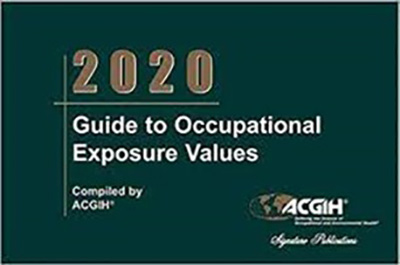
For convenience, OSHA provides annotated tables with a side-by-side comparison of PELs and TLVs, along with the statement that ACGIH TLVs are “widely recognized as authoritative.” Documentation for TLVs is available from ACGIH.
Given the importance of occupational exposure limits for employee safety, the most common PELs and TLVs are time-weighted averages (TWAs) for safe (“no adverse effect”), full-time exposure over an eight-hour workday. Alternatively, chemicals may also have short term exposure limits (TLV-STEL), otherwise known as ceiling limits, to help assess the risk of exposure over shorter time periods.
Exposure limits refer to airborne contaminants. For substances that exist as vapors (gases) at room temperature, OELs are expressed in parts per million (ppm), corresponding to parts of vapor per million parts of air by volume (25 °C, 1 atm). For other chemicals and those that form mists or dusts, the limits are reported in milligrams per cubic meter (mg/m3). These values can be interconverted using the molecular weight of the substance and the molar volume of air.
What are the practical consequences of TLVs for research chemists or chemistry instructors? In general, substances with TLVs <50 ppm should always be used in a fume hood. If you have a choice of solvents or reagents for a lab activity, compare their TLVs in addition to their hazard warnings. Higher TLVs may be less hazardous or safer.
Thank you for your continued support of the Safety First! initiative for the Chicago Section. Please share your questions or stories with the Environmental and Lab Safety Committee at [email protected] to help us grow and learn together.
- IRENE CESA
*The REL (Recommended Exposure Limit) encompasses both chemical and physical hazards in the workplace.
Sustainability

Technology Drives Innovation
On April 4, 2022, The International Panel on Climate Change (IPCC) released its most recent report summarizing growth and trends in greenhouse gas (GHG) emissions over the last decade (2010 - 2019). The report describes modest progress in the face of ongoing challenges and offers a blueprint for limiting average global temperature increases in the next half-century to 1.5 - 2 °C relative to preindustrial levels.
Central to achieving this ambitious goal is the role of science and technology in driving innovation and accelerating progress. Technological innovation leads to a “push - pull model” of economic development. Technology “pushes” solutions to existing problems by making clean energy more efficient, for example, and it also creates market “pull” (consumer demand) for new and attractive products, such as electric vehicles.
The IPCC report describes rapid progress in cost, performance, and adoption of renewable, non-fossil fuel-based energy sources over the past 10 years. In fact, the rate of growth in these technologies exceeded that predicted by experts. According to the IPCC, “at least 18 countries have sustained GHG emission reductions for longer than 10 years.” (See page 9 in the Summary for Policymakers.) The countries identified by Time magazine included the United States, United Kingdom, Japan, and many countries in Europe. Improved technical feasibility of solar energy, wind energy and electricity storage technologies is a huge factor in this accomplishment. Let’s look at three examples of scientific advances in these technologies.
Scientific advances driving solar power growth include perovskite technologies, heterojunction solar cells, and improved energy storage systems. A simple search for the word “perovskite” in chemistry journals reveals how chemists are contributing to the future of solar power. In the case of wind energy, the chemical industry played a decisive role in the research and development of composite materials that make wind turbine blades “more reliable, affordable and recyclable.” The chemical industry is also leading the way in developing technologies for recycling wind turbine blades. In a similar, way, scientific improvements in battery technology, performance, safety, and stability have contributed to their widespread adoption and a decreased reliance on fossil fuels. Due to the overwhelming success of battery technology, continued research in this area is increasingly focused on sustainability issues related to the availability of raw materials, their processing, and disposal of electronic waste.
These successes are reflected in the graph shown below from the IPCC report. The fraction of net GHG emissions attributed to CO2 generated from fossil fuels (blue) decreased from 65% to 64% over the last decade compared to 2000–2009, and the overall rate of increase in GHG emissions also slowed from 2.1% per year to 1.3% per year during this period. The facts, however, do not obscure the central challenge that remains—the total increase in GHG emissions over the most recent 10-year period was the highest on record.
From the Working Group III Report, Climate Change 2022 Mitigation Of Climate Change; published by IPCC; Figure SPM.1; https://www.ipcc.ch/report/ar6/wg3/.
- IRENE CESA
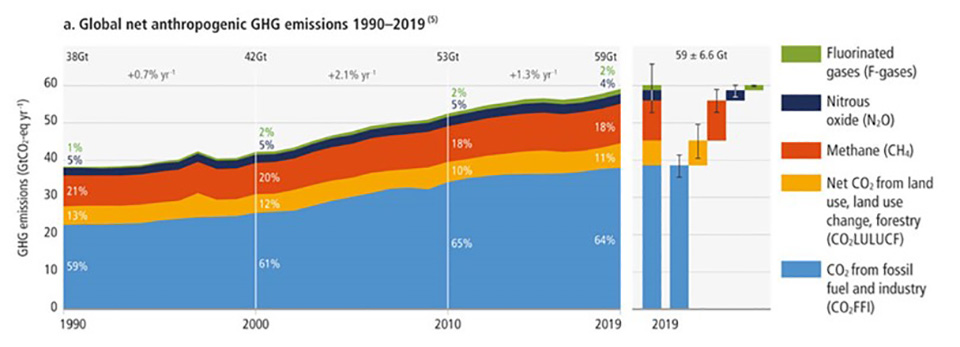
From the Working Group III Report, Climate Change 2022 Mitigation Of Climate Change; published by IPCC; Figure SPM.1; https://www.ipcc.ch/report/ar6/wg3/.
Teacher Resources
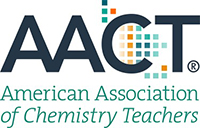
AACT Opportunities
The American Association of Chemistry Teachers (AACT), a sister organization of the ACS, has many wonderful opportunities for K - 12 teachers. Please share this article with your K - 12 colleagues and friends and encourage them to take advantage of these opportunities by becoming AACT members.
Teacher of the Year Awards
Do you know an awesome teacher who is a member of AACT? AACT presents annual awards for outstanding teachers in elementary, middle, and high school. The deadline for teachers to apply for these awards is May 13th. Application packets include a questionnaire, letter of support, and a brief resume (no more than two pages) highlighting the last five years of teaching. Each winner receives a $1000 cash prize and a one-year complimentary AACT membership renewal. To learn more, please go to: https://teachchemistry.org/news/aact-teacher-of-the-year-award.
Science Coaches Program
Applications are now open for the 2022 - 2023 Science Coaches program. Apply now for the opportunity to collaborate throughout the school year with a chemistry professional who can help you bring chemistry to life for your students. Teachers selected to participate in the program receive a $550 gift certificate from Flinn Scientific to enhance your science classroom. Elementary school science teachers, middle school physical science or earth science teachers, and high school teachers of chemistry or other classes with significant chemistry content are eligible to participate. Applicants must be AACT teacher - members. (A limited number of complimentary, one-year AACT memberships are available for teachers based on school need.) More information about the program can be found at: https://teachchemistry.org/professional-development/science-coaches. Visit https://fs11.formsite.com/AACT/SC22-23Teacher/index.html to download an application!
Chemistry & Sustainability Content Writing Team
AACT will be hosting a content writing team this summer for K - 12 teachers to help create unique and exciting classroom lesson plans relating to the seven Sustainable Development Goals (SDG) identified by ACS as foundational to the work of chemistry. Applications are open to current AACT members who teach chemistry content (including K - 5 science teachers, 6 - 8 physical science teachers, and 9 - 12 chemistry teachers). Participants who are selected to be part of the content writing team will earn $500! The application is open through May 31st. To learn more and apply, please go to: https://fs11.formsite.com/AACT/sustainability/index.html.
ChemClub
ACS/AACT ChemClub is a high school program that provides opportunities for students to experience chemistry beyond the classroom. More than 500 clubs across the United States and abroad (but only seven in the Chicago area!) participate in after-school activities, get involved in community building, learn about chemistry careers, and enjoy social events to better understand the role of chemistry in our everyday lives. As a teacher who participates in this program, I have gotten ideas, gifts, activities, and external support to give students greater opportunities to see the wonders of chemistry. The program has allowed my students to explore areas of chemistry beyond their general chemistry coursework. The program is FREE for schools to participate!
In 2022–2023 the ACS will be piloting the expansion of ChemClub to middle schools! This is a wonderful way to give younger students some of the opportunities described above and increase their appreciation for the wonders of chemistry. Registration opens May 1 for any school wanting to start a ChemClub in the fall of 2022.
ACS Hach Grants
ACS Hach High School Chemistry Classroom Grants support ideas that enhance classroom learning, foster student development, and reveal the wonders of chemistry for students. Teachers can request up to $1500 for laboratory equipment and supplies, instructional materials, professional development, and student-conducted field studies. Applications close June 1. Learn more here: ACS-Hach High School Chemistry Classroom Grant - American Chemical Society.
- SHERRI RUKES
NGSS Activities from AACT
The following activities that align with the Next Generation Science Standards (NGSS) are available for all AACT members on the organization website. Enjoy sharing these activities with your students!
High School Chemistry
In the Chemical Escape Room, students work collaboratively in applying their chemistry knowledge in order to “escape the room.” The activity requires students to solve four clues spanning a range of chemistry topics from atomic structure all the way up to stoichiometry. The clues, in turn, point students to four chemical reactions that are carried out on a small-scale and ultimately provide them with a four-digit combination to a lock. This engaging activity is not only fun but also allows for interactive and collaborative review. By the end of the activity, students should be able to:
- Demonstrate a clear understanding of atomic structure, periodic trends, ionic and covalent naming and formula writing, chemical reaction types, molar calculations, and stoichiometric calculations.
- Conduct small-scale chemical reactions and make qualitative observations.
- Calculate theoretical quantities using stoichiometry.
The activity takes about 30 minutes to prepare and 90 minutes of classroom time. It can be completed during one block class period or over two regular class periods.

Alignment with NGSS Standards:
- HS-PS1-2: Construct and revise an explanation for the outcome of a simple chemical reaction based on the outermost electron states of atoms, trends in the periodic table, and knowledge of the patterns of chemical properties.
- HS-PS1-7: Use mathematical representations to support the claim that atoms, and therefore mass, are conserved during a chemical reaction.
Science and Engineering Practices:
- Using Mathematics and Computational Thinking
- Analyzing and Interpreting Data
- Engaging in Argument from Evidence
- Obtaining, Evaluating, and Communicating Information
Elementary and Middle School Science
A favorite activity of elementary and middle school teachers and their students, Elements Are Out of This World introduces students to the elements that make up the Earth’s atmosphere and lithosphere. Students compare and contrast this information with the elements that compose various other astronomical objects. The activity provides a great way to connect earth science and chemistry content and lesson plans. The lesson requires about 20 minutes for teachers to prepare and consists of three parts. Part 1 takes about 30 minutes, Part 2 another 20 minutes, and the last part takes 80 minutes.
By the end of the activity, students should be able to:
- List the elements found in Earth’s lithosphere.
- List the elements found in Earth’s atmosphere.
- Explain the elements found in the atmospheres of other planets.
- Describe how scientists identify the elemental composition of objects in space.
- Compare the elements found in Earth’s atmosphere to those found in the atmospheres of other planets.
Alignment with NGSS Standards:
- 5-PS1-3: Make observations and measurements to identify materials based on their properties.
- MS-PS4-2: Develop and use a model to describe that waves are reflected, absorbed, or transmitted through various materials.
Science and Engineering Practices:
- Engaging in Argument from Evidence
- Obtaining, Evaluating, and Communicating Information
If you would like to learn more about these activities or the benefits of AACT membership, please email me at [email protected]
- SHERRI RUKES
ACS Resources
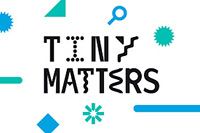
Discover the ACS Podcast
and Blog
The ACS provides chemistry information through their podcast, Tiny Matters, and blog, ACS Axial. Both digital resources provide informative and fascinating content in easy-to-consume formats.
The ACS launched their new podcast, Tiny Matters, at the beginning of 2022. Every other Wednesday, podcast hosts Deboki Chakravarti and Sam Jones discuss little things that have a big impact on our world. Deboki is a science writer and YouTuber with a Ph.D. in biomedical engineering from Boston University. Sam has a Ph.D. in biomedical science from UCSD and is freelance journalist. Tiny Matters tackles science questions such as “Why haven’t we terraformed Mars yet?” and “Could probiotics save coral reefs?”
The podcast is available through your favorite platforms and on the ACS website. (Tiny Matters replaced the ACS podcast, Orbitals, which you can still access at https://www.acs.org/content/acs/en/pressroom/orbitals.html.)

ACS Axial is a blog from ACS Publications that provides news and information for the whole scientific community. The blog covers hot new research topics, your favorite journals, and career resources. Posts include an ACS Publications Year in Review, award announcements, and celebrations of diversity. You can filter the stories based on your career, experience level, or interests. You can also sign up to receive monthly email updates tailored to your interests.
ACS Axial also provides you with the opportunity to share your knowledge or perspective with the ACS community. If you enjoy writing, then consider writing a post and check out the blog’s submission guidelines. Publish your ideas and connect with other chemists!
Whether you prefer listening to podcasts or reading blogs, strengthen your connection to chemistry and other chemists by utilizing these ACS resources!
Outreach

Science Coaches Wanted!
Are you a chemist or retired chemist with a passion for education? The ACS Education Division and AACT invite you to join their Science Coaches program by volunteering your time to support a K - 12 teacher for one school year.
Who can become a Science Coach?
The ACS welcomes volunteers from many groups—chemistry graduate students, both active and retired chemistry professionals and college faculty, as well as former or retired high school teachers.*
What do Science Coaches do?
Science coaches perform demonstrations, plan labs, propose enrichment activities, and mentor science club members. Each coach works with one science teacher, generally in the same geographic area. The ACS recommends that coaches meet virtually or in person with their mentee teachers six times during the year.
How do students and schools benefit?
Through their interactions with teachers in the Science Coaches program, chemists help students discover a positive association and passion for chemistry and science. Schools that participate in this program receive a $550 grant from Flinn Scientific that can be used to purchase laboratory and classroom supplies, such as goggles and molecular model kits, as well as class experiences like field trips to nearby chemistry labs.
Please apply now! Contact Sherri Rukes at [email protected] to learn more or to connect with a local teacher who has asked to participate with a Science Coach in 2022–2023.
*Current K12 teachers and undergraduate students are not eligible to be coaches.
ChemShorts for Kids

Clean Water
We know that we cannot live without water. Thankfully, the Earth is covered by 71% water. Only 3% of that, however, is freshwater, and to make matters worse, just 0.5% is available to us. The remaining 2.5% is locked up in glaciers, polar ice caps, soil, and the atmosphere. If we could represent all of the world's water by one liter, only 5 mL (1 teaspoon) would be available for us to drink. And yet to drink that water, we must first purify it from the lakes and rivers. Let’s take a hint from nature to see how we can do that.
Materials
- Coffee filters
- Container of water with impurities (dirt, twigs, etc.)
- Gravel
- Plastic bottles, 1- or 2-liter size, 2
- Rubber bands
- Sand
- Scissors
- Optional: Activated charcoal, food coloring
BE SAFE: Adult supervision is necessary when cutting the bottle.
Preparation
Obtain water in a container and artificially “pollute” it by adding dirt, twigs, food coloring, etc. (Be creative!) Carefully cut two plastic bottles in half using scissors.
Experiment
Fold one of the coffee filters in half. Place the filter on top of the bottle-cap opening on one of the plastic bottles and secure the filter in place using a rubber band. For the second bottle, fold the coffee filter three times before securing it to the bottle-cap opening. (How many layers of paper are there for the water to flow through in each bottle?)
Place each filtering unit upside down into the bottom half of one bottle. To each filtering unit, add enough sand so it is about 2 - 3 cm high. Then add 2 - 3 cm of gravel on top of the sand. Shake the container of dirty water and pour about 1 cup of “dirty” water on top of the gravel in each unit. Observe the appearance of the water as it passes through the filters.
What’s happening?
Filtration is a simple concept but it is not necessarily obvious the order in which the filtering agents (gravel, sand, and filter paper) should be used. Having the gravel on top, sand in the middle, and filter paper at the bottom allows large particles such as twigs to be removed first, followed by finer particles. If the order were reversed, with filter paper on top and gravel on the bottom, large particles would get caught on the filter paper and cause it to become plugged. This would prevent water from flowing through the filter.
Tripling the number of layers of filter paper in the second filtration unit should result in cleaner water passing through it compared to the first. (Would you expect similar results using 6 - 9 cm of sand rather than 2 - 3 cm?) Additionally, the slower the water travels through the filters the more time the particles have to interact with the filter materials and get removed from the water. Using activated charcoal can add another layer of filtration to help remove charged particles.
The filtered or purified water obtained is still not clean enough to drink! Bacteria and other pathogens in water that can make you ill are NOT removed by simple filtration like in this activity. Outdoor water is normally boiled to kill bacteria before you can drink it.
References
https://kids.nationalgeographic.com/books/article/water-wonders
To view all past “ChemShorts for Kids” articles, go to:
https://chicagoacs.org/ChemShorts
- PAUL BRANDT
AACT

Become a member of the
American Association of
Chemistry Teachers
Why AACT?
AACT is an organization created by teachers for teachers. Join a community of passionate chemistry teachers who share strategies to overcome everyday classroom challenges.
Member benefits include:
-
Over 1000 K–12 teaching resources
-
Live webinars and over 160 archived webinars
-
50 downloads from the Journal of Chemical Education and other ACS Publications
-
Access to AACT online periodical and ChemMatters magazine
-
Access to the ACS Member Insurance Program and the Chemical Educator's Legal Liability Plan
-
Join a digital and social media community of teachers
-
ChemClub program for experiences beyond the classroom
Annual membership dues
-
K–12 Chemistry Teacher $45 (through 5/31)
-
Affiliate Member (member of the Chemistry community) $50
-
Student member (preservice teacher or undergraduate) $25
Join today or give a teacher the gift
of a membership!
Upcoming Events
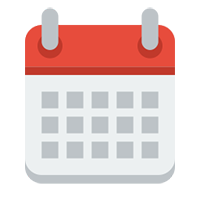
UPCOMING EVENTS
|
May 1 |
Division of Analytical Chemistry Younger Chemists Conference Travel Grants deadline |
|
May 10 |
Articles due for the June Bulletin issue |
|
May 12 |
Chicago Board of Directors Meeting |
|
May 20 |
111th Willard Gibbs Award Celebration |
|
May 22 |
Chicago ACS Scholarship Exam |
|
June 9 |
Chicago Board of Directors Meeting |
|
June 17 |
June Monthly Dinner Meeting |
|
August 1 |
Deadline for August/September Bulletin issue |
|
August 21-25 |
ACS Fall 2022 Meeting, Chicago, IL |
Please also refer to the Section’s website chicagoacs.org and social media accounts.
Board & Committee Members

2022 Chicago ACS Section Officers
|
Chair Chair-Elect Past Chair Vice Chair Secretary Treasurer |
Mark Cesa Margaret Schott Sherri Rukes Amber Arzadon Josh Kurutz Michael Morello |
chair-at-chicagoacs.org chair-elect-at-chicagoacs.org past-chair-at-chicagoacs.org vice-chair-at-chicagoacs.org secretary-at-chicagoacs.org treasurer-at-chicagoacs.org |
Masthead
Bulletin Information
May 2022, Vol. 109, No. 5
Published by the Chicago Section of the American Chemical Society
https://chicagoacs.org
Editors: Amber Arzadon and Irene Cesa
editor-at-chicagoacs.org
Digital Editor: Josh Kurutz
Proofreaders: Helen Dickinson and Ken Fivizzani
ACS Chicago Section Office
Address: 1400 Renaissance Drive,
Suite 312
Park Ridge, IL 60068 (847) 391-9091
[email protected]
Social links
Follow ChicagoACS on social media!
Instagram: https://www.instagram.com/ChicagoACS/
Facebook: https://www.facebook.com/ChicagoACS
LinkedIn: https://www.linkedin.com/groups/1854603/
